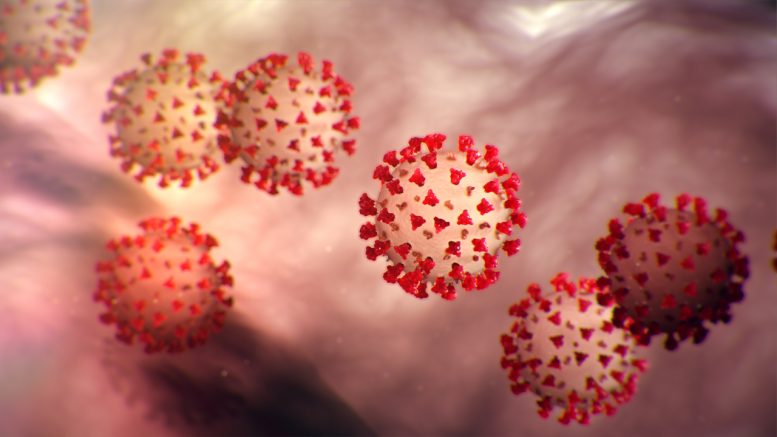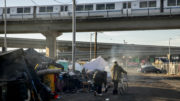Editor’s note: Hoping to go to the movies or a concert or hang out inside a bar in 2020? Don’t count on it
California’s new color-coded COVID-19 “Blueprint for a Safer Economy” that takes effect Monday may be easier to follow and understand.
It also makes it even less likely that Sacramento and other counties can fully reopen anytime soon—and very possibly not until next year.
Gov. Gavin Newsom says the new system uses lessons learned and better scientific understanding after six months of the pandemic to create a “stringent and slow plan for living with COVID-19 for the long haul.”
Unveiled by Newsom on Friday, the blueprint includes four tiers, based on the rates of new cases per day and on positive tests. Sacramento is one of 38 counties, with about 80% of the state’s population, starting in the most restrictive purple tier with “widespread” COVID-19 transmission.
To get to the red level with only “substantial” spread, a county must have 7 or fewer daily new cases per 100,000 people and a positive rate on testing of 8% or less. As of Aug. 31, Sacramento County was at 12.0 new daily cases and an 8.1% positivity rate, with 293 deaths and 18,052 total cases.
In the first update posted Sept. 8, Sacramento County improved, but remained in the widespread purple tier with 10.3 new daily cases and a positivity rate of 7.2% for the week ending Aug. 29.
UPDATE: In the Sept. 22 update, Sacramento County improved to 6.2 new daily cases per 100,000 people and a 4.6% positivity rate. Those numbers would move the county to the red “substantial” tier, but only if they continue for a second week. That could lead to more business reopenings. As of Sept. 22, the county reported 393 deaths and 21,800 total cases.
UPDATE: On Sept. 23, Sacramento County Public Health allowed nail salons to reopen with masks, social distancing and sanitization, following guidance from state health officials.
The least restrictive yellow tier—which allows most indoor businesses to operate—requires fewer than 1 new case per 100,000 plus a positivity rate of less than 2%. The last time that Sacramento County hit those targets was the end of May, after the initial stay-at-home orders, according to Public Health.
To move forward, a county must meet the next tier’s criteria for two consecutive weeks. A county must stay in that new, less restrictive tier for at least three weeks. If a county’s numbers worsen for two consecutive weeks, it goes backward. And the state can pull an “emergency brake” if hospitalizations rise dramatically.
So even if Sacramento County, which just boosted Public Health spending by $45 million, crushes coronavirus spread and reaches the least restrictive yellow tier as quickly as possible, that’s at least six weeks and likely longer.
That means mid- to late October at the earliest—and that’s often the start of the seasonal flu season, when many experts fear another deadly surge of COVID-19 that could overwhelm the health care system. If that happens, it seems likely that restrictions will be imposed again for the rest of the winter.
Even if there’s a vaccine by the end of the year, there are no guarantees. So if you’re hoping to see a movie, go to a concert or hang out inside a bar, you may be out of luck.
While the new blueprint is more gradual, there are some exceptions statewide, even in the most restrictive purple tier: Starting Monday, malls can reopen at 25% capacity and barber shops and hair salons can serve customers, with precautions. Nail salons, however, cannot, and owners are complaining of unfairness.
Monday afternoon, Sacramento Public Health issued an updated order in line with the new blueprint, making clear that only outdoor operations are allowed at bars (if they offer sit-down meals), cardrooms, gyms, houses of worship, movie theaters, museums and other places.
Restaurants in counties in the purple tier can only serve diners outdoors, while those in the red tier can open indoors at 25% capacity or 100 patrons, whichever is fewer.
As for schools in counties in the purple tier, they’re not allowed to offer in-person instruction for all students. In an Aug. 20 letter, Sacramento County Public Health admonished some schools trying to open under the guise of “day care,” “child care” or a “camp.”
Kindergarten through sixth grade can seek a waiver. And Friday, Sacramento Public Health issued an order following state public health guidance to permit classroom instruction of small “cohorts” of as many as 14 students and two adults to teach students with disabilities, English language learners and students at higher risk of learning loss, as well as youths in foster care, at risk of abuse or neglect or experiencing homelessness.
“We’ve learned a lot the past few months. We’re looking now to a uniform framework.”

The new blueprint is California’s latest attempt to balance public health and economic survival.
The first stay-at-home orders were issued in mid-March. After COVID-19 case numbers flattened somewhat, Sacramento and other counties loosened restrictions in June. Sacramento’s June 19 order allowed indoor dining, movie theaters, nail salons and other non-essential businesses to reopen.
Now, it’s clear that California reopened too quickly.
As businesses reopened, cases and deaths spiked, especially from Memorial Day weekend through the July Fourth holiday. Despite a mask mandate, people were infected at house parties and social gatherings, as well as bars, and more younger people contracted the virus.
Eventually, on July 13, Newsom shut down non-essential businesses again, and a day later Sacramento County issued an order that closed indoor businesses, including restaurants, movie theaters and nail salons.
The new blueprint replaces the state Public Health’s watch list, which determined when counties could allow more activities, but which sometimes confused local officials. Sacramento County has been on the watch list nearly every day since June 24.
“We learned a lot over the first several months of the pandemic about COVID-19 and how it spreads. For example, we know how much safer outdoor activities are than indoor ones and that it’s critical everyone wears a mask to limit the spread of the disease. This blueprint incorporates what we’ve learned,” state Public Health says.






Be the first to comment on "Stuck in COVID shutdown"